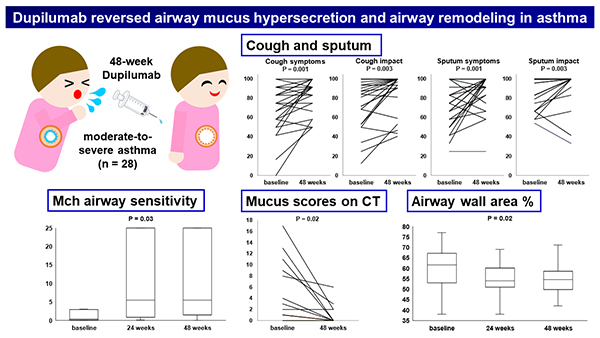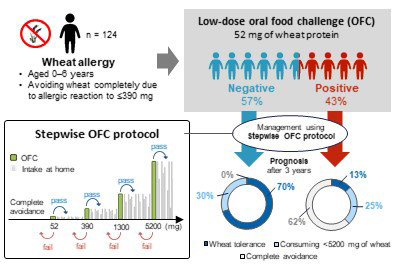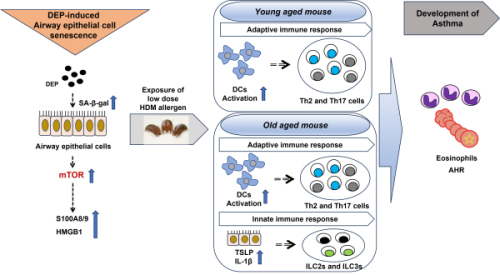Volume 73, Issue 3 (July 2024)
Editor's Choices
Editor’s comment: Dupilumab inhibits IL-4 and IL-13 signaling, critical drivers of type 2 inflammation, mucus secretion, airway hypersensitivity, and airway remodeling. Conducting a prospective observational study, Tajiri et al. assessed the efficacy of dupilumab, especially for subjective and objective measures of airway mucus hypersecretion and airway dimensions in moderate to severe asthma. They found that cough and sputum-related scores on questionnaires as well as radiological mucus scores and airway wall thickening on CT improved significantly with 48-week dupilumab treatment. Their findings suggest that dupilumab reversed airway mucus hypersecretion as well as some aspects of airway remodeling in asthmatic patients.
Editor’s comment: Wheat is one of the most common causes of IgE-mediated food allergy (FA) during childhood. Low-dose oral food challenge (LD-OFC) is an approach to avoid complete elimination in high-risk patients with wheat allergy. Itonaga et al. examined the 3-year prognosis after LD-OFC in patients who passed and failed LD-OFC. Upon baseline LD-OFC, 57% passed (LD-tolerant), whereas 43% failed (LD-reactive). Within 3 years, 38% of the LD-reactive group passed re-administered LD-OFC, and 70% of all participants were able to avoid complete elimination. Predictors of persistent wheat allergy in the LD-tolerant group were older age, high ω-5-gliadin-specific IgE level, and having other food allergies (1.94). The findings indicate that LD-tolerant patients frequently acquired wheat tolerance within 3 years and that even if once positive, one-third passed the re-administered LD-OFC within 3 years.
Editor’s comment: Cellular senescence is a hallmark of aging. Its main features include the senescence-associated secretory phenotype (SASP), which causes various changes in the surrounding cells in a paracrine manner. Senescence-related changes are found in asthmatic airways, and cellular senescence induced by environmental exposure is considered to be involved in these changes. Using mouse models, Lee et al. investigated the role of diesel exhaust particle (DEP)-induced cellular senescence in the development of asthma. They showed that DEP-induced senescence led to susceptibility to allergic sensitization in both young and old mice and also deteriorated house dust mite-induced airway inflammation by enhancing dendritic cell activation.





